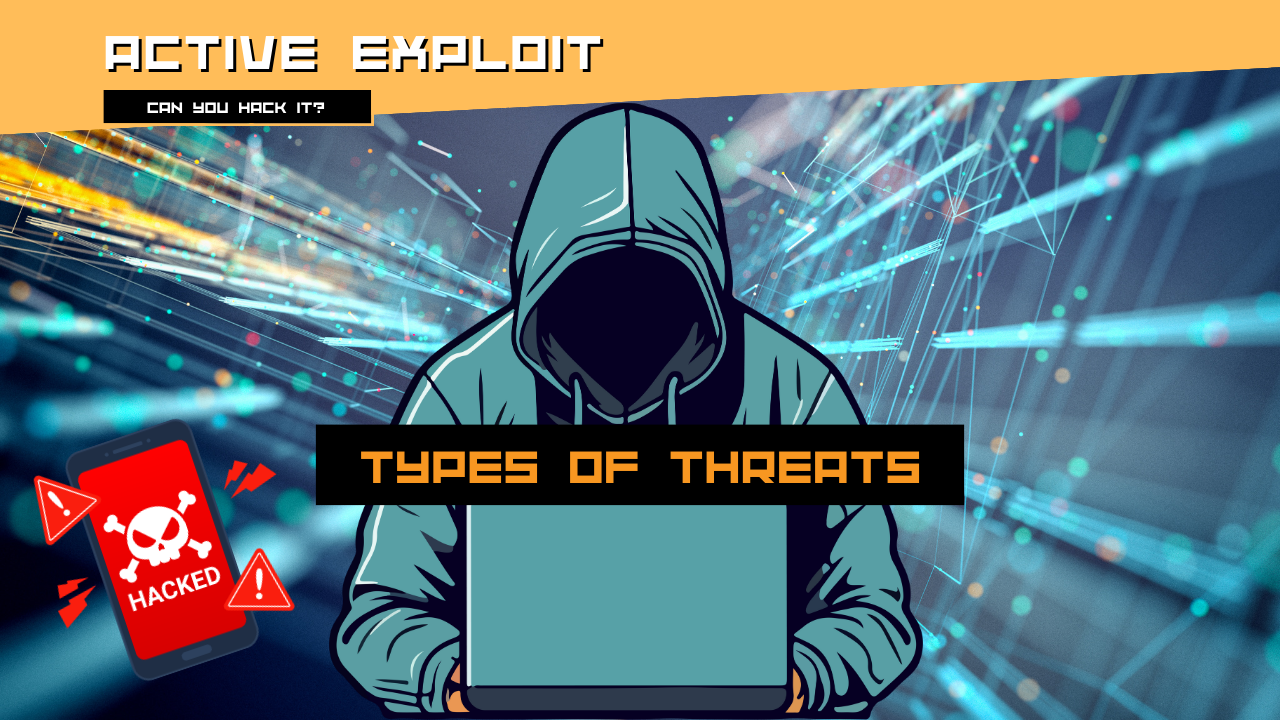Types of Cyber Threats
Cyber threats come in many forms and continually evolve as attackers develop new methods to exploit vulnerabilities. While this list is not complete here are some of the most common types of cyber threats:
1. Malware
Malware is malicious software designed to damage, disrupt, or gain unauthorized access to computer systems. There are several types of malware, including:
- Virus: A type of malware that attaches itself to a legitimate program or file and spreads to other programs and files when the infected program or file is executed.
- Worm: Malware that replicates itself to spread to other computers, often exploiting security vulnerabilities without the need for user interaction.
- Trojan Horse: Malware that disguises itself as a legitimate application or file to trick users into installing it, often creating a backdoor for unauthorized access.
- Ransomware: Malware that locks or encrypts a victim’s data and demands a ransom to restore access. Notable examples include WannaCry and CryptoLocker.
- Spyware: Malware that secretly monitors and collects information about a user’s activities without their knowledge or consent.
- Adware: Malware that automatically displays or downloads advertising material, often in the form of unwanted pop-up ads.
2. Phishing
Phishing is a social engineering attack where attackers impersonate a trustworthy entity to deceive individuals into providing sensitive information, such as usernames, passwords, and credit card numbers. Phishing attacks often occur through:
- Email Phishing: Fraudulent emails that appear to come from legitimate sources.
- Spear Phishing: Targeted phishing attacks aimed at specific individuals or organizations.
- Smishing: Phishing attacks delivered via SMS (text messages).
- Vishing: Voice phishing, where attackers use phone calls to trick victims into revealing personal information.
3. Ransomware
Ransomware is a type of malware that encrypts a victim’s files or locks them out of their system, demanding a ransom payment in exchange for restoring access. Ransomware attacks can cripple organizations by making critical data and systems inaccessible until the ransom is paid.
4. Denial of Service (DoS) and Distributed Denial of Service (DDoS) Attacks
- Denial of Service (DoS) Attack: An attack that aims to make a machine or network resource unavailable to its intended users by overwhelming it with a flood of illegitimate requests, causing it to crash or become unresponsive.
- Distributed Denial of Service (DDoS) Attack: Similar to a DoS attack, but the flood of illegitimate requests comes from multiple compromised systems distributed across the internet, making it harder to mitigate.
5. Man-in-the-Middle (MitM) Attack
A Man-in-the-Middle (MitM) attack occurs when an attacker secretly intercepts and relays messages between two parties who believe they are directly communicating with each other. MitM attacks can be used to steal sensitive information or inject malicious content.
6. SQL Injection
SQL Injection is a code injection technique that exploits vulnerabilities in an application’s software by inserting malicious SQL code into a query. This can allow attackers to view, modify, or delete data in the database, and in some cases, gain administrative access to the system.
7. Cross-Site Scripting (XSS)
Cross-Site Scripting (XSS) is a vulnerability that allows attackers to inject malicious scripts into web pages viewed by other users. These scripts can steal cookies, session tokens, or other sensitive information, and even perform actions on behalf of the user.
8. Advanced Persistent Threats (APTs)
Advanced Persistent Threats (APTs) are prolonged and targeted cyberattacks in which an intruder gains access to a network and remains undetected for an extended period. APTs aim to steal sensitive data rather than causing immediate damage, often targeting high-value information such as intellectual property, financial data, or government secrets.
9. Insider Threats
Insider Threats originate from within an organization and can be either malicious or unintentional. These threats involve employees, contractors, or other trusted individuals who have access to sensitive data and systems. Insider threats can include data theft, sabotage, or accidental data breaches.
10. Zero-Day Exploits
Zero-Day Exploits are attacks that occur on the same day a vulnerability is discovered in software, before the developer has had a chance to fix it. Zero-day exploits are particularly dangerous because they take advantage of unknown vulnerabilities, leaving systems unprotected.
Cyber threats are diverse and constantly evolving, posing significant risks to individuals, businesses, and governments. Understanding the various types of cyber threats is essential for developing effective security measures to protect against them. By staying informed and implementing robust cybersecurity practices, organizations can better defend against these threats and safeguard their critical assets.

